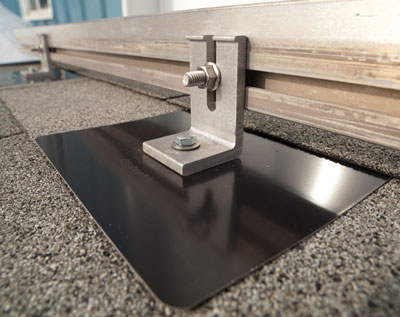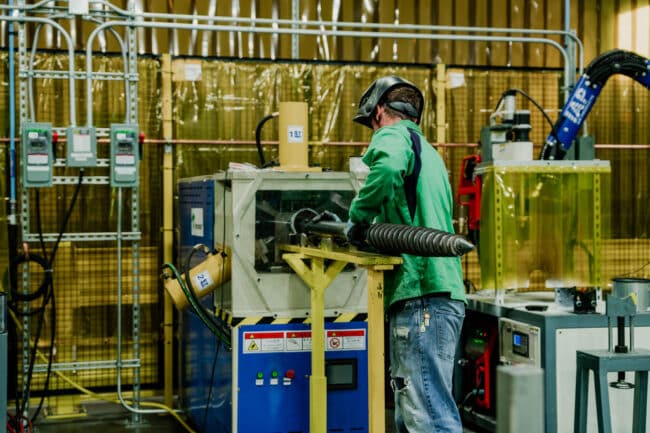How to Protect PV Systems From the Worst Weather

When mounting solar modules to any roof, installers must ensure that the mounting products they select will maintain the integrity of the roof without voiding roofing manufacturers’ warranties. Photo courtesy of EcoFasten Solar.
“Both sustained wind speed or ultimate wind speed should be evaluated when designing an array,” Spies and Menton noted.
The current building code requires designing to a three-second gust wind speed that corresponds to approximately a 7 percent probability of exceedance in a 50-year period for most commercial buildings or residences.
The larger the wind speed, the greater the pressure acting on the modules and the array racking system. At higher wind speeds, more roof attachments are needed to secure the array to the roof. In very high wind speed areas likeFlorida, Spies and Menton say installers often use three rails per module to ensure robust structural attachment.
The issue here is uplift. “Racking systems, especially fixed tilt ground mount or carport systems, can essentially act as a sail,” Verros says. “Each and every quote that we provide for racking requires our design experts to do additional research to confirm this loading information. Most times we will use the 100-year average wind loading to determine the design parameters.”
When wind impacts a building, a wind vortex forms around its corners or edges, causing higher wind loads over those areas. Code and common wisdom for building PV systems only started to catch up with physics within the last 10 years. As Gilliss says, “since PV design was not the original intent for these sections of the code, results could be grossly overconservative, or leave the system dangerously underdesigned.” You want enough ballast used to keep the modules on the roof, but avoid collapsing the roof with too much.
There’s also the issue of shielding effects from adjacent arrays for both roof and ground mounts. Gilliss says wind tunnel testing can determine how perimeter arrays in front and in back of the interior arrays help to “shield” those interior arrays, thereby reducing the wind loads on them.
Check out the Mounting Trends Feature from our 2015 Mounting Guide
“This can lead to reduced ballast or anchorage requirements on roof mounts and further distances between foundations on ground mounts,” he said.
Some companies are combating wind with wind deflectors, which prevent wind from getting under the modules, and earth anchors for ground mounts. Earth anchors can significantly reduce foundation costs by minimizing concrete, steel and mobilization costs. Some ground-mounted arrays can change tilt to get into the zero-degree stow position to reduce wind pressures at appropriate times.
“Savvy engineering teams are reviewing the wind stow option as this requires power,” says Mike Orshan, director of sales for Array Technologies. “In the likely event of a power outage and a need to stow, many trackers are stuck. A new innovation is to have the tracker rows facing the wind to float to a survivable position, leaving the unaffected rows producing energy.”
Leaks
Let’s not forget waterproofing. Climate varies widely by region, but in nearly all, water intrusion is a factor. Anywater leak can possibly damage the interior of a structure and weaken the attachment of the system, so proper waterproofing of the structural attachment of the array is critical to long-term costs of ownership.




